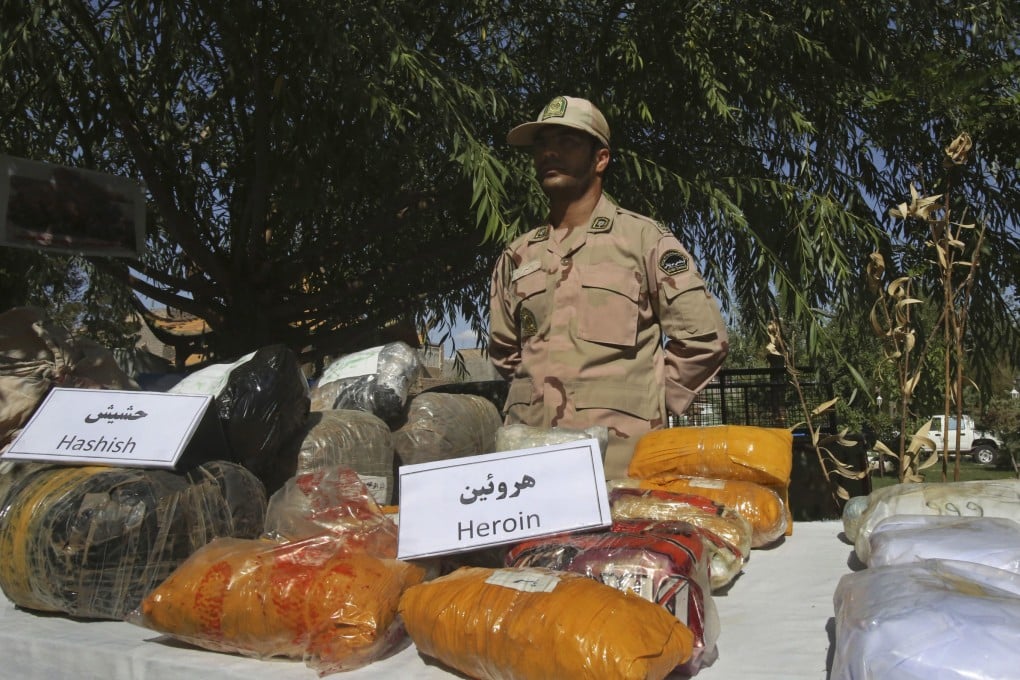Iran steps up efforts to block import and transit of Afghani opium
Iranian authorities increase efforts to control transport of narcotics including opium and hashish into Iran from neighbouring Afghanistan as record harvest looms

In the face of Afghanistan’s unprecedented boom in opium production, neighbouring Iran is trying to baton down its border to slow down smuggling, building moats, walls and other large-scale projects.
Iran spent more than US$26 million last year alone on the border projects, which also include large embankments, new border posts and lengths of barbed wire along parts of its 2,000-kilometre border with Afghanistan and Pakistan.
“The transit of narcotics is a complicated issue. Smugglers are wealthy. They change tactics and use modern equipment that makes it more and more difficult to discover. We need new, modern equipment to combat drugs effectively,” General Ali Moayedi, Iran’s anti-narcotics police chief, said during a recent tour of the border.
“It’s against Islamic teachings and our policy to allow transit of illicit drugs through our territory.”
Neighbouring Afghanistan has all the makings of a narco-state and is the main source of drugs coming into Iran and headed to markets in Europe and the United States.
Last year, 209,000 hectares of poppies were planted across Afghanistan, up 36 per cent over the year before. They produced an estimated 5,500 metric tonnes of opium, according to the United Nations drug agency. By comparison, only a little over 7,000 hectares of poppy field were eradicated.
The 2014 harvest is expected to match or even exceed last year’s record. In coming years, opium will grab an even larger share of Afghanistan’s already troubled economy, as money from US military contracts and aid work dries up. The UN estimates that some 200,000 families in Afghanistan are involved in opium production already and that the country has some 1 million addicts.

As a share of Afghanistan’s economy, opium looms large: the UN estimates the potential gross value of Afghan opiates last year was around US$3 billion – equal to 15 per cent of the country’s gross domestic product.